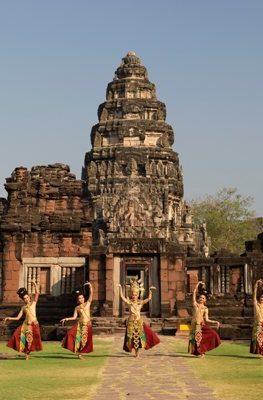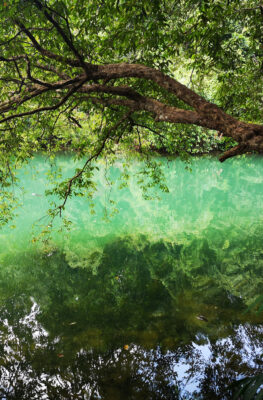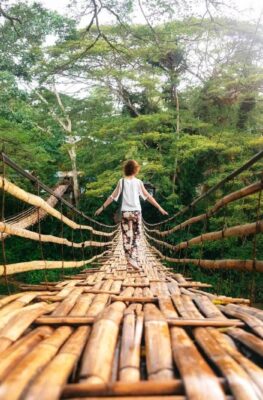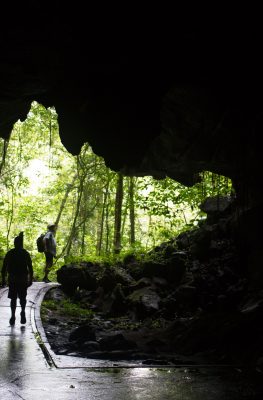Published on February 26, 2010

The colonial architectural heritage in Southeast Asia has rarely been emphasized by tourism authorities. The lack of interest was likely due to the difficulty in assimilating the legacy of foreign cultures as an element in a country’s identity. And also because colonial powers did not always leave fond memories…
But times change and with a new generation in power, Southeast Asian governments are less reluctant to promote their colonial legacy. With architecture being the most tangible heritage from colonial times, authorities see it now as an asset for tourism. The variety of colonial architecture is in fact unique to Southeast Asia. No other part of the world has been witness to so many foreign influences and this diversity is still visible today.
Jakarta old-town bears the mark of Holland with some houses dating back from the 17th century. In Penang, Saint George is Asia’s oldest Anglican church and a excellent example of Georgian architecture. In the Philippines, Manila’s Intramuros district or the wonderful city of Vigan, both showcase cobble-stoned streets, houses with iron balconies and elegant baroque churches, transporting visitors back into ancient Spanish times. Northern Luzon Island is gaining fame for having some of the world’s finest examples of Spanish baroque. And venturing in to the mountainous city of Dalat in southern Vietnam seems like visiting a typical French resort somewhere in Normandy.
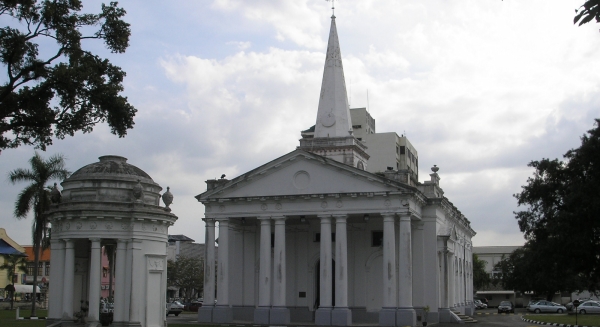
Architecture expressed the power and ambition of colonial empires and their desire to drag these colonies into ‘modern’ times. This is particularly true for the French who were on a mission to bring “civilization” to Indochina, from baguette breads to schools. The influences can still be seen today throughout Indochina. Hanoi likely epitomizes it best as the French spared no effort to turn the city into an Indochina replica of Paris. And with stunning results; today Hanoi is still dominated by leafy grand boulevards bordered by beautiful colonial villas, mansions and impressive public buildings. And like a jewel, the stunning Opera House holds court in the city centre, emulating in its details the Paris Opera house.
But it is not just Hanoi that shows off its French influences; Phnom Penh cafes on the Mekong River echo brasseries from Southern France; Ho Chi Minh City’s post office since1886 is a classic reminder of Gustave Eiffel, who designed it himself: and In Luang Prabang or in Champassak village in Laos, beautiful classic French villas cohabit with the graceful spires of Lao temples and shrines.
In Malaya and/or Myanmar, the British colonists covered cities with neo-gothic, neo-renaissance or Tudor-style buildings. Yangon (Rangoon) probably has the most authentic Victorian atmosphere in the region. Yangon has dozens of elegant buildings such as St. Paul’s English High School, St. Mary’s Cathedral or the State Railways Administration. Unfortunately most of Yangon’s buildings are in a sorry state, but the fading colors and decay only add to their charm.
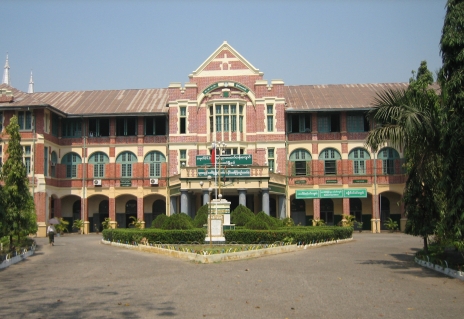
Malaysia also has its share of charming places from the Malayan years. The States of Perak and Penang along Malaysia’s west coast have a rich colonial heritage. Taiping is probably the most British of any Malaysian city but Ipoh and Georgetown in Penang have imposing Victorian or Edwardian structures.
Out of all colonial powers, Holland seems to have left the least grand structures during its rule in Indonesia. A couple of cities did however receive more attention from the Dutch. But when developing them, Holland encouraged modernist architectural trends in contrast to France or England, ultimately leading to the introduction of Art Nouveau and Art Deco in Southeast Asia.
The most impressive city is certainly Bandung in West Java. Due to become Indonesia’s new capital at the time, the city enjoyed a construction boom from the late 19th century until Indonesia’s independence. The result is amazing: Bandung has hundreds of Art Deco buildings, probably the world’s second largest collection after Miami Beach! Gedung Sate -the current administration office of the West Java Governor- is the most iconic, while Gedung Merdeka is of significant historical importance; location of the ratification of Indonesia’s independence. Other witnesses of colonial architecture can be seen in Medan (North Sumatra), Surabaya and Malang (East Java), Semarang (Central Java) and Jakarta.
After destroying many fine Victorian buildings in the seventies and eighties, Singapore has also rediscovered its colonial heritage. Old structures have been converted into cultural institutions such as the Peranakan Museum, the Singapore Art Museum or the Museum of Asian Civilisations. Hundreds of old houses have been beautifully restored in Katong or Tanjong Pagar districts. Singapore’s pragmatism even pushed authorities to rebuild what they previously destroyed. Bugis Street was patiently recreated after the Government discovered that its destruction had chased away visitors.
Half a century after most Southeast Asian countries gained their independence, interest in colonial architecture has definitely made a comeback; Penang and Melaka were recently listed as UNESCO World Heritage Sites thanks to efforts to preserve the traditional architecture and culture; in Indonesia, Surabaya City (East Java) launched ‘Heritage Track’ offering free bus rides to discover the city’s fine historical architecture; and in Cambodia and Vietnam, renovation programs are giving new life to villas and palaces from the French colonial periods.
22 colonial cities not to be missed in Southeast Asia
INDOCHINA
Champassak (Laos)
Luang Prabang (Laos)
Phnom Penh (Cambodia)
Dalat (Vietnam)
Hanoi (Vietnam)
Ho Chi Minh City (Vietnam)
Yangon(Myanmar)
Indonesia
Bandung
Jakarta
Malang
Medan
Semarang
Surabaya
Malaysia/Singapore
Georgetown (Penang)
Kuala Lumpur
Kuching
Malacca
Taiping
Singapore
Philippines
Manila-Intramuros
Laoag
Vigan
Luc Citrinot is a well-known freelance journalist and travel consultant who has worked regularly with PATA, Air Asia, Tourism Authority of Thailand and the Indonesia Ministry of Tourism, among others.



